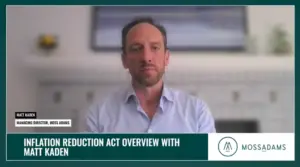E2B: Energy to Business: Why Should Energy Asset Owners Consider an ETRM System?
Will an Energy & Commodity Trading & Risk Management (ETRM) system benefit you and your company? It’s certainly possible.
With their ability to capture commercial activity, measure and mitigate associated risk and calculate returned gained from commercial activities, ETRM systems are a valuable tool energy companies rely on to provide technology enablement for the execution of a commercial strategy while ensuring adequate institutional control.
“I think anybody with any kind of commodity risk embedded in their business benefits from an ETRM system, especially as volatility continues to increase – not only in base fossil-fuel type commodities but even the green commodities,” says Mark Smith, founder of Bluepig Energy Advisors. “I would say an ETRM system is kind of like the building block to really strive to improve their commercial excellence and get improved returns out of the capital they’ve employed.”
Yet, there are specific cases in which those utilizing ETRM systems can see a larger return on investment.
“Most major oil and gas companies, whether it’s upstream, midstream or downstream, they’re generally starting on this journey and powered kind of similarly,” says Kent Landrum, Managing Director of Process & Technology at Opportune LLP.
“I would say pretty much any asset operator with exposure to commodity prices, especially if they’ve historically not thought of themselves as traders, should probably take a look at how a commercial strategy coupled with a good risk policy and supported by an ETRM platform can allow them to offer things like greater pricing flexibility to their customers, which can give them a competitive advantage in the market,” Landrum adds.
2021 promises to be an intriguing year in energy and commodities trading, as it comes on the heels of a pandemic-induced plummet in demand. However, a vast swath of new entrants on the software side looking to leverage cloud-based solutions and an increased desire among asset owners to extract value from their asset base via trading could see activity pick up.
Before companies consider making upgrades to legacy ETRM systems and software, there are several critical considerations decision-makers need to look into. First, who needs to have a seat at the table, and why? Second, how can ROI be maximized with a streamlined rollout? Finally, what will the organization’s strategy around communicating during implementation?
The pair of experts tackled these questions and more, including how organizations that have already invested in an ETRM system can get the most out of their existing solutions without having to go back to the drawing board.
“ETRM system implementations in particular are highly complex projects and they affect people all over the organization,” Landrum says. “So, communication and change management are key, but you’ve got to help people understand that vision and case for change.”






